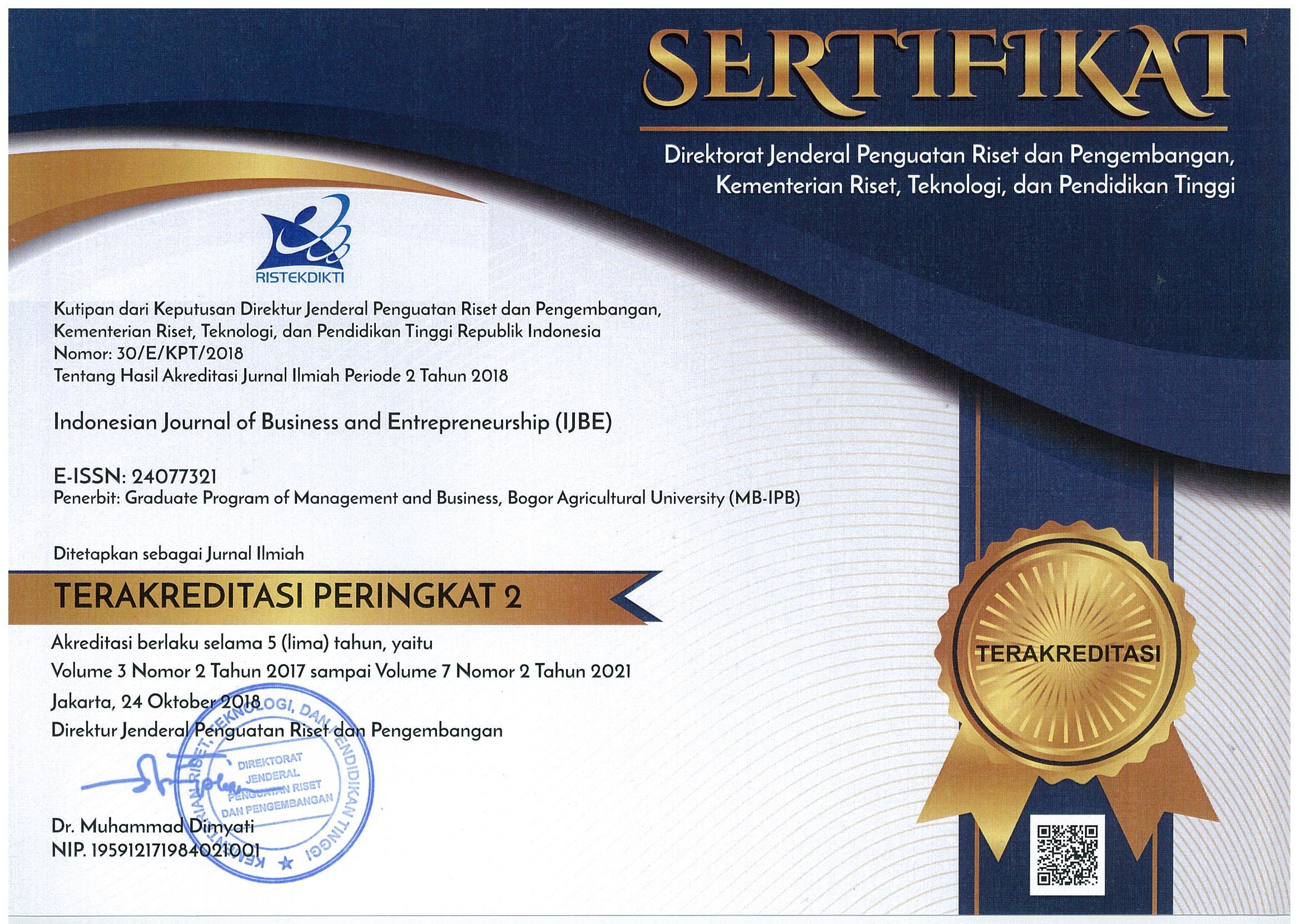IMPROVING PERFORMANCE OF BISCUIT PRODUCTION PROCESS THROUGH LEAN SIX-SIGMA AT PT XYZ
Abstract
This research aims to analyze waste or loss using the 7-waste approach and value added/non value added activities in the production process at PT. XYZ. This research also aims to evaluate the production process capability and sigma values at PT. XYZ and used DMAIC technique (Define, Measure, Analysis, Improvement, and Control) from Lean Six-sigma with an analysis using Failure Mode and Effect Analysis (FMEA). The results of the research obtained the values of Process Cycle Efficiency (PCE) of 47.29%, CTQ (Critical to Quality) and process capability value in the form of Cpm (Capability Index) for each process stage and yield. Line-5 has DPMO (Defects per Million Opportunities) value of 29,632,607 with a Sigma Score 3.39, and FMEA (Failure Mode and Effect Analysis) analysis resulted in recommendations for improvement at each process stage.
Keywords: process cycle efficiency, biscuit, lean six-sigma, CTQ, Cpm
ABSTRAK
Penelitian ini bertujuan melakukan analisis tingkat pemborosan (waste/loss) dengan menggunakan pendekatan 7 waste dan value added/non value added activity dalam proses produksi di PT. XYZ. Selanjutnya, melakukan evaluasi terhadap nilai kapabilitas proses produksi dan nilai sigma di PT. XYZ. Penelitian ini menggunakan teknik DMAIC (Define, Measure, Analysis, Improvement, and Control) dari Lean Six Sigma dengan Analisis menggunakan menggunakan alat Failure Mode and Effect Analysis (FMEA). Hasil Penelitian mendapati nilai Process Cycle Efficiency (PCE) 47.29%, CTQ (Critical to Quality) dan nilai kapabilitas proses berupa Cpm (Capability Index) setiap tahapan proses dan Yield. Line-5 memiliki DPMO (Defects Per Million Opportunities) sebesar 29632.607 dengan Sigma Score 3.39 Sigma, analisis FMEA(Failure Mode and Effect Analysis) menghasilkan rekomendasi perbaikan di setiap tahapan proses.
Kata kunci: process cycle efficiency, biskuit, lean six sigma, CTQ, Cpm
Downloads
References
Ammar A. 2011. Using six sigma tools to measure and improve the performance of a manufacturing supply chain [thesis]. US: Texas Technical university.
Arunagiri P, Babu GA. 2013. Review on reduction of delay in manufacturing process using lean six sigma (LSS) system). International Journal of Scientific and Research Publication 3(2): 693–697.
Asmah F. 2011. Setting Up Biscuits Production Company in Ghana. Ghana: Savonia University of Applied Science.
Furterer SL. 2011. Applying lean six sigma to reduce linen loss in an acute care hospital. International Journal of Engineering, Science and Technology 3(2011): 39–55.
Gazpersz V. 2011. Lean Six Sigma for Manufacturing and`Service Industries – Waste Elimination and continuous cost reduction. Bogor: Vinchristo Publication.
George ML. 2003. Lean Six Sigma for Service. New York: McGraw-Hill.
Gijo EV, Anthony J, Hernandez J, Scaria J. 2013. Reducing patient waiting time in a pathology department using Six Sigma methodology. Joural Leadership in Health Services 26(4): 253–267.https://doi.org/10.1108/LHS-02-2012-0004.
Gijo EV, Anthony J, Kumar M, Mc Adam R, Hernandez J. 2014. An application of Six Sigma methodology for improving the first pass yield of a griding process. Journal of Manufacturing Technology 25(1): 125–135. https://doi.org/10.1108/JMTM-12-2011-0109.
Hassan MK. 2013. Applying lean six sigma for waste reduction in a manufacturing environment. American Journal of Industrial Engineering 1(2): 28–35.
Harry M, Schroeder R. 2000. Six Sigma: The Breakthrough Management Strategy Revolutionalizing the World’s Top Corporations.New York: Currency/Doubleday.
Jirasukprasert P, Garza-Reyes JA, Kumar V, Lim MK. 2014. A Six Sigma and DMAIC application for reduction of defects in a rubber gloves manufacturing process. International Journal of Lean Six Sigma 5(1): 2–21. https://doi.org/10.1108/IJLSS-03-2013-0020.
Kumar D, Kaushish D. 2015. Scrap reduction in a piston manufacturing industry: an analysis using six sigma and DMAIC methodology. The IUP Journal of Operations Management XIV(2): 233–245.
Liker JK. 2004. Toyota Way: 14 Management Principles from the World's Greatest Manufacturer. McGraw-Hill Education: New York, Chicago, San Francisco, Athens, London, Madrid, Mexico City, Milan, New Delhi, Singapore, Sydney, Toronto.
Puspitasari NB, Martanto A. 2014. Penggunaan FMEA dalam mengidentifikasi resiko kegagalan proses produksi sarung ATM (Alat Tenun Mesin) (Studi Kasus PT. Asaputex Jaya Tegal). Jurnal Teknik Industri UNDIP IX(2): 93–98. https://doi.org/10.12777/jati.9.2.93-98.
Pyzdek T. 2003. The Six Sigma Handbook; A Complete Guide For Green Belts, Black Belts, And Managers At All Levels. New York: McGraw-Hill.
Sutrisno A, Lee TR. 2011. Service reliability assessment using failure mode and effect analysis (FMEA): survey and opportunity roadmap. International Journal of Engineering, Science and Technology. 3(7): 25–38.
Stamatis DH. 1995. Failure Mode and Effect Analysis – FMEA from Theory to Execution. New York: ASQC Press.
Womack JP, Jones DT, Roos D. 1990. The Machine That Changed the World - The Story of Lean Production Toyota’s Secret Weapon in the Global Car Wars That Is Revolutionizing World Industry. US: Free Press.
Zaqi A, Suseno. 2015. Peningkatan produktivitas perusahaan dengan metode Six Sigma, Lean dan Kaizen. Jurnal Teknik Industri X( 2): 103–116.








